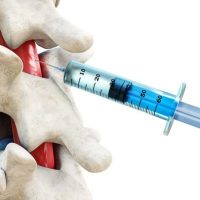Injectable Therapy Shows Promise For Tissue Repair After Severe Spinal Cord Injury

Spinal cord injuries are truly life-changing, even if they do not result in complete paralysis of the areas of the body below the site of the injury. People who suffer these kinds of injuries require supportive treatment for the rest of their lives, and three out of ten patients require at least one hospitalization in the first year following their release from the hospital after the original injury. Only three percent of patients ever regain functional use of the parts of their bodies affected by the spinal cord trauma, and life expectancy for spinal cord injury patients has not increased since the 1980s. A study published in the current issue of Science magazine offers hope for people living with spinal cord injuries, but it will be a while before the treatments described in the study become widely available for patients. If you have suffered a spinal cord injury in a motor vehicle accident, contact a Columbia car accident lawyer.
The Northwestern University Study
The current issue of the academic journal Science contains the results of a study conducted at Northwestern University. The authors of the study conducted an experiment where they injected mice that had suffered spinal cord injuries resulting in paralysis of their hind legs with peptide amphiphile supramolecular polymers. These so-called “dancing molecules” caused the growth of axons on spinal cord cells near the site of the injury to regrow, improved the survival rate of motor neurons near the affected area, and caused myelin, an extracellular substance that protects axons, to form. The result was that, after receiving several injections over the course of four weeks, the mice regained the use of their hind legs and were able to walk again.
What This Means for Personal Injury Lawsuit Plaintiffs With Spinal Cord Injuries
The results of this study are encouraging indeed; they are an important step toward testing the dancing molecule therapy on human patients in clinical trials. People currently living with spinal cord injuries may be able to get access to this treatment in several years. Some such patients are currently involved in personal injury lawsuits against the parties that caused the accidents that resulted in their spinal cord injuries. In order to receive damages in the amounts they are requesting, they must demonstrate the cost of the medical treatments they will require for the rest of their lives.
Currently, plaintiffs cannot use the new Northwestern University study as the basis of expert witness testimony to prove that they would benefit from dancing molecule therapy. This is because it is an animal study, and the Daubert standard of scientific evidence only allows expert witnesses to cite clinical trials performed on human subjects.
Let Us Help You Today
A personal injury lawyer can help you get the money you need for treatment of a spinal cord injury you suffered as a result of someone else’s negligence. Contact The Stanley Law Group in Columbia, South Carolina or call (803)799-4700 for a free initial consultation.
Sources:
science.org/doi/10.1126/science.abh3602
news.northwestern.edu/stories/2021/11/dancing-molecules-successfully-repair-severe-spinal-cord-injuries/

